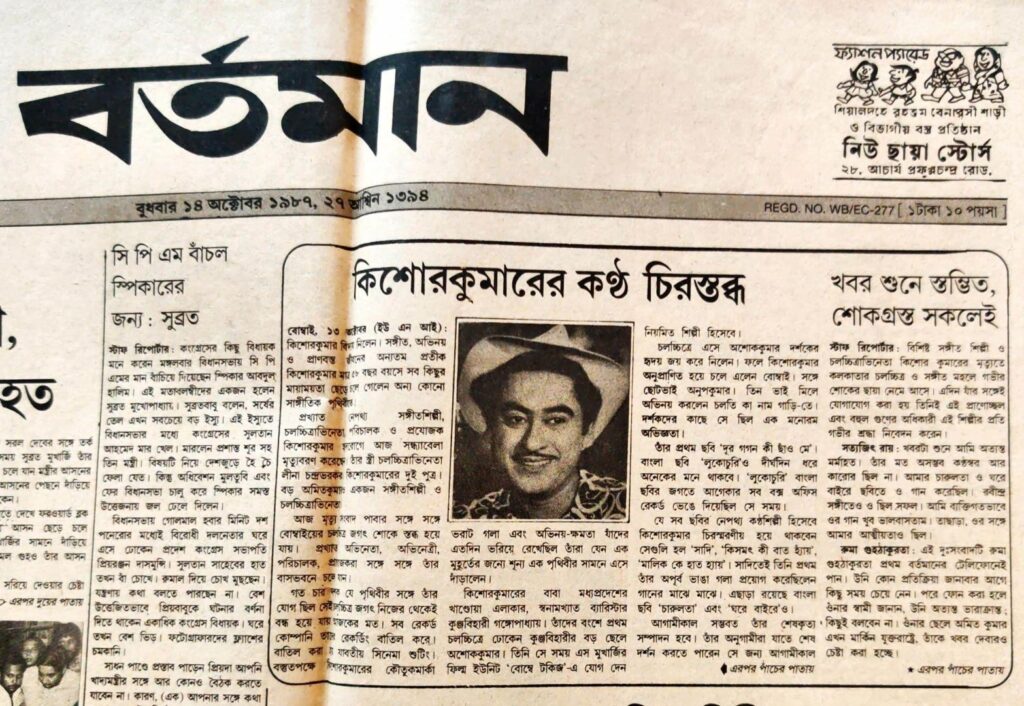
The media landscape is experiencing a seismic shift worldwide, and Bengali news outlets are no exception. With the proliferation of smartphones, high-speed internet, and the growing influence of social media, news consumption habits have drastically changed. Bengali news platforms, which once thrived on traditional print and TV mediums, are now embracing digital transformation to stay relevant, expand their audience, and compete on a global scale.
The Rise of Digital News Consumption
Over the past decade, Bengali readers have increasingly turned to digital platforms for their daily news fix. With younger generations preferring to scroll through headlines on their mobile screens rather than flipping through newspapers or waiting for TV bulletins, the traditional formats have taken a backseat. This digital revolution has prompted Bengali news outlets to evolve quickly. Websites, mobile apps, podcasts, and YouTube channels are now crucial components of their content distribution strategies.
The transition from offline to online hasn’t been merely a technical one—it represents a complete overhaul in how content is created, delivered, and monetized. From live updates on breaking news to detailed explainer videos and long-form investigative journalism, Bengali news providers are now tailoring their offerings to fit a digital-first world.
Leveraging Social Media Platforms
Social media has become a vital tool in the dissemination of news. Bengali news outlets are actively using platforms like Facebook, Twitter (X), Instagram, and even WhatsApp to reach audiences in real-time. These platforms enable news organizations to engage with their audiences more intimately, share instant updates, and crowdsource stories. Some leading outlets have amassed millions of followers, showing the power and reach of digital engagement.
Moreover, content strategies have also shifted. Headlines are now crafted to be more click-worthy and shareable. Visual content such as short videos, infographics, and memes play a significant role in grabbing attention, particularly among younger users who have shorter attention spans.
The Importance of Mobile Optimization
With mobile devices accounting for a large portion of web traffic, Bengali news outlets are prioritizing mobile-friendly experiences. Responsive web design, fast loading speeds, and app development have become crucial in capturing and retaining user attention. Apps now offer customizable notifications, night modes, offline reading options, and voice support in Bengali to ensure accessibility and convenience.
News aggregators and digital apps like Newsosis have further contributed to this mobile news consumption wave. Platforms like these aggregate top headlines from different Bengali sources, presenting them in a digestible and user-centric format. This allows users to stay updated without switching between multiple apps or websites, thereby streamlining the experience.
Video Journalism and YouTube
Video content is now one of the most effective mediums for engaging online audiences. Bengali news outlets are investing heavily in video journalism by creating YouTube channels, live streaming events, and producing documentary-style reports. Short news bulletins and explainers in Bengali are drawing millions of views and shares.
This shift to video is not only a response to consumer preference but also a strategic move to tap into advertising revenue from video platforms. With monetization options available through platforms like YouTube, Bengali media companies are generating additional revenue streams beyond traditional banner ads and subscriptions.
Rise of Hyperlocal and Citizen Journalism
Another important digital trend in the Bengali news ecosystem is the rise of hyperlocal journalism. With more readers seeking news specific to their locality or community, outlets have begun covering neighborhood-level stories. This is often complemented by the rise of citizen journalism, where locals report incidents directly via mobile phones.
Platforms like Newsosis empower everyday users to participate in the news-making process by contributing updates, images, and videos. This democratization of news contributes to a more diversified and real-time news landscape, especially in rural or under-reported areas.
Adapting Business Models for Digital Success
Monetizing digital content is a persistent challenge, but Bengali news outlets are experimenting with various models to sustain their operations. Freemium models, where basic content is free but premium content requires a subscription, are increasingly common. Some platforms also offer ad-free versions for paying users.
Digital advertising, sponsored content, native advertising, and affiliate marketing have all become essential parts of the revenue puzzle. Subscription-based newsletters and crowdfunding for investigative stories are also gaining traction.
Data analytics is now at the heart of decision-making. News outlets are analyzing user behavior to optimize content strategies, enhance engagement, and maximize ad revenue. Understanding what time users are most active, which topics generate the most clicks, or what format gets the highest engagement helps shape more effective content strategies.
Challenges on the Path to Digitization
Despite significant progress, the path to digital maturity is not without its obstacles. Issues such as digital literacy, misinformation, and the digital divide still plague the Bengali news space. Many readers, especially in rural areas, may have limited access to high-speed internet or modern devices, restricting their ability to engage with digital content fully.
Moreover, the spread of fake news on social media poses a serious threat to journalistic integrity. Bengali news outlets must now invest in fact-checking mechanisms, verification teams, and responsible reporting practices to maintain trust among their audience.
Another pressing concern is the sustainability of independent journalism. As ad revenue becomes concentrated in the hands of tech giants, smaller or independent Bengali news outlets may struggle to compete. Collaborative ventures, government support, and partnerships with tech platforms could be the key to a more sustainable future.
Digital Journalism Training and Skill Development
The digital transition has also emphasized the need for reskilling and upskilling. Journalists today must be well-versed in multimedia storytelling, SEO, data journalism, and audience engagement techniques. Bengali newsrooms are investing in training programs to ensure their teams can thrive in a digital-first environment.
Additionally, journalism schools and media institutions in Bengal are updating their curricula to prepare the next generation of journalists for a digitally dominated industry. This includes instruction in mobile journalism, podcast production, video editing, and ethical use of social media.
The Road Ahead
The digital transformation of Bengali news is both inevitable and exciting. While there are hurdles to overcome, the benefits of embracing technology are evident. News outlets that adapt to digital trends with agility and innovation will not only survive but thrive in the coming years.
The presence of tools like Newsosis reflects the evolving ecosystem where aggregation, personalization, and user-friendly formats define the future of news. As the Bengali-speaking population continues to grow online, the demand for reliable, fast, and engaging news will only increase.




More Stories